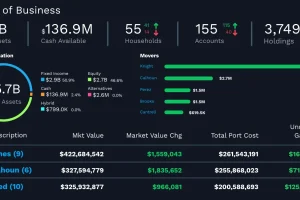Let’s be honest—getting a loan hasn’t always been the smoothest process. Paperwork, endless waiting, and that sinking feeling when you’re denied without much explanation. But AI is flipping the script. Imagine a system that doesn’t just crunch numbers but understands your financial story. That’s where we’re headed.
How AI Is Reshaping Loan Underwriting
Traditional underwriting? It’s like judging a book by its cover—a few credit scores, some income details, and boom, decision made. AI digs deeper. It analyzes patterns in spending habits, cash flow, even gig economy income that old-school models might miss. Here’s the deal:
- Speed: Decisions in minutes, not weeks.
- Accuracy: Fewer errors from manual data entry.
- Fairness: Reducing human bias (when designed right).
Take Zest AI, for example. Their models can process thousands of data points—things like rent payments or utility bills—to spot creditworthiness where traditional systems see blanks. It’s not magic; it’s math with context.
Personalized Lending: Loans That Fit Like a Tailored Suit
Generic loan offers feel like getting handed a one-size-fits-all raincoat—it might work, but it’s awkward. AI enables dynamic pricing and terms based on your unique profile. Think:
- Interest rates adjusted in real-time for life changes (new job, paid-off debt).
- Custom repayment schedules—aligning with seasonal income for freelancers.
- Micro-loans for specific needs (e.g., a $3,000 HVAC repair vs. a $20,000 refi).
Companies like Upstart and Kabbage already use AI to offer hyper-personalized options. But the real game-changer? When your bank proactively suggests a loan before you realize you need it—like a financial GPS rerouting you around a cash crunch.
The Dark Side: Risks and Ethical Gray Areas
Sure, AI sounds shiny—but it’s not without pitfalls. Bias can creep in if training data reflects historical inequalities. And let’s face it, explaining an AI’s “no” to a rejected applicant isn’t easy. Key concerns:
- Transparency: Can lenders explain how decisions are made?
- Over-reliance: Ignoring human judgment entirely risks blind spots.
- Data privacy: More data means more vulnerability to breaches.
Regulators are scrambling to keep up. The EU’s AI Act and U.S. guidelines on algorithmic fairness hint at tighter rules ahead. Lenders walking this tightrope will need both tech savvy and ethics committees.
What’s Next? 3 Trends to Watch
The next five years will get wild. Here’s what’s bubbling up:
- Blockchain + AI hybrids: Instant verification of income/assets via secure ledgers.
- Voice-based underwriting: Analyzing speech patterns for stress or deception (controversial, but coming).
- “Self-healing” loans: Terms that auto-adjust if you lose income—like a financial airbag.
JPMorgan’s COiN platform already reviews 12,000 contracts in seconds. Soon, your Alexa might negotiate loan terms while you brew coffee.
The Human Touch in an AI World
Here’s the thing—AI won’t replace loan officers entirely. The best systems will augment them. Picture this: An underwriter gets an AI alert that a small-business owner’s cash flow dipped… but their Shopify reviews skyrocketed. Human + machine says, “Approved with a six-month grace period.” That’s the sweet spot.
We’re heading toward a future where loans feel less like interrogations and more like collaborations. Scary? Maybe. Exciting? Absolutely. The question isn’t whether AI will change lending—it’s how we’ll steer that change toward fairness and flexibility.





